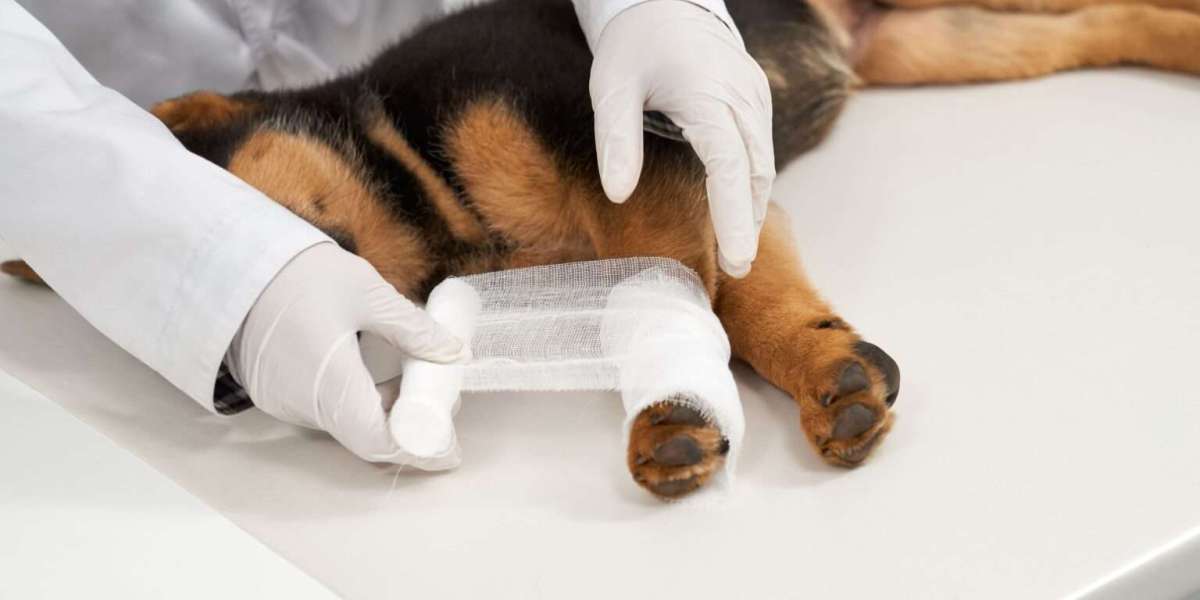Dealing with a bleeding pet can be a terrifying experience. Whether your pet has been involved in an accident, bitten by another animal, or suffered a wound, controlling severe bleeding in pets quickly is crucial. Immediate action is essential to prevent blood loss, which can be life-threatening. Knowing how to manage this emergency before you can get your pet to an emergency veterinary care facility can make all the difference in their survival and recovery.
In this blog, we’ll guide you through the steps to control severe bleeding in your pet until you reach an emergency vet. These actions will help stabilize your pet and prevent further complications as you head to the clinic.
Recognizing Severe Bleeding in Pets
Bleeding can be classified into three types: arterial, venous, and capillary. In the case of severe bleeding, it’s most likely to be arterial or venous, which are more dangerous. Recognizing pet bleeding quickly is essential to prevent shock and other complications.
Signs of severe bleeding include:
- Profuse bleeding: A continuous flow of blood that doesn’t stop.
- Pulsating blood flow: If the blood spurts or pulses with each heartbeat, it’s likely arterial bleeding.
- Excessive blood loss: If blood is pooling around your pet, especially from a large wound, this is a sign of significant blood loss.
- Pale gums and rapid heart rate: These can indicate shock due to blood loss.
When you notice these signs, immediate intervention is necessary.
Immediate Actions to Take for Bleeding Wounds
While it can be alarming to see your pet bleeding, staying calm is crucial. By quickly assessing the situation and taking the proper steps, you can help prevent further damage and stabilize your pet.
Here’s what you should do:
- Apply Pressure to the Wound
The most important step is to apply direct pressure to the bleeding area. Use a clean cloth, bandage, or even your hand to apply firm pressure. If the wound is large or deep, you may need to apply pressure for several minutes until the bleeding starts to slow down. If blood soaks through the cloth, don’t remove it; add another layer of cloth and keep applying pressure. - Elevate the Wound (If Possible)
If the wound is on a limb, elevate it above the level of the heart to reduce blood flow to the area. This can help slow down the bleeding. Avoid elevating a head or torso wound as this can worsen the bleeding. - Use a Tourniquet as a Last Resort
If the bleeding is coming from a limb and the pressure alone doesn’t stop it, you may need to apply a tourniquet. Use a clean cloth or belt to tightly wrap around the limb just above the wound. The tourniquet should be applied only if the bleeding cannot be controlled by pressure. Always be cautious, as a tourniquet can cause further damage if left on too long. - Seal the Wound (If Safe to Do So)
For certain types of wounds, such as a puncture or deep laceration, you may want to try to seal the wound with clean gauze or bandaging material. For large open wounds, avoid pressing the edges together, as this could introduce bacteria and cause an infection. - Keep Your Pet Calm and Still
Once the bleeding is controlled, try to keep your pet calm and as still as possible. Movement can cause further injury and restart the bleeding. If your pet is agitated or stressed, speak to them in a soothing voice and try to keep them in a quiet space. - Transport Your Pet to the Emergency Vet
Once the bleeding is under control, it’s time to get your pet to the emergency veterinary care facility. Time is critical, especially with severe bleeding, and you’ll want to get your pet treated as soon as possible. If your pet is too weak or in too much pain to walk, gently carry them on a stretcher or blanket to the car.
What to Expect at the Emergency Vet
Upon arrival at the emergency vet, the medical team will assess your pet’s condition and begin stabilization procedures. They may take additional steps, such as:
- IV fluids: To replace lost blood volume and prevent shock.
- Blood transfusion: If your pet has lost a significant amount of blood, they may need a transfusion.
- Surgical intervention: In some cases, your pet may need surgery to repair damage caused by the injury or to stop internal bleeding.
- Pain management: Severe bleeding is often accompanied by pain, so the vet will provide appropriate pain relief to keep your pet comfortable.
At our clinic, we provide specialized urgent care for pets experiencing severe bleeding or other emergencies. Our skilled team is equipped with the latest tools to provide quick and effective care to stop the bleeding, address shock, and prevent further damage.
Preventing Further Bleeding After Treatment
Once your pet has received emergency treatment, there are a few things you can do at home to help the healing process:
- Follow the vet’s instructions: This may include administering medications, monitoring the wound for infection, and limiting your pet’s activity while they recover.
- Check the wound regularly: Look for signs of infection, such as redness, swelling, or pus. If you notice any of these signs, contact your vet immediately.
- Limit movement: Keeping your pet calm and limiting their physical activity will help the wound heal faster.
If the bleeding was caused by a pet injury, keep your pet indoors and avoid situations where they may be hurt again. It’s always a good idea to keep an eye on their health and behavior during recovery, as severe injuries can sometimes result in complications.
Conclusion
Knowing how to handle severe bleeding in pets is critical for pet owners. In an emergency, every second counts, and your quick actions can save your pet’s life. By staying calm, controlling the bleeding, and getting your pet to an emergency vet promptly, you can help ensure the best possible outcome for your pet.
At North MS Pet Emergency, we specialize in urgent care for pets and have extensive experience in treating pets with bleeding wounds. Whether it’s a dog injury, bite wound, or severe trauma, we’re here to provide expert care to get your pet back to health.
Contact Us Now for immediate emergency care. Every moment counts when your pet is in distress.



